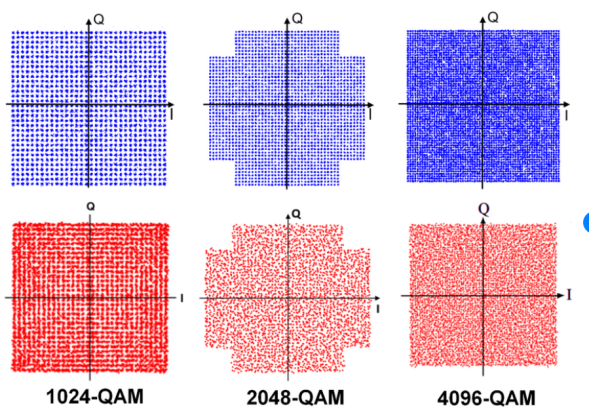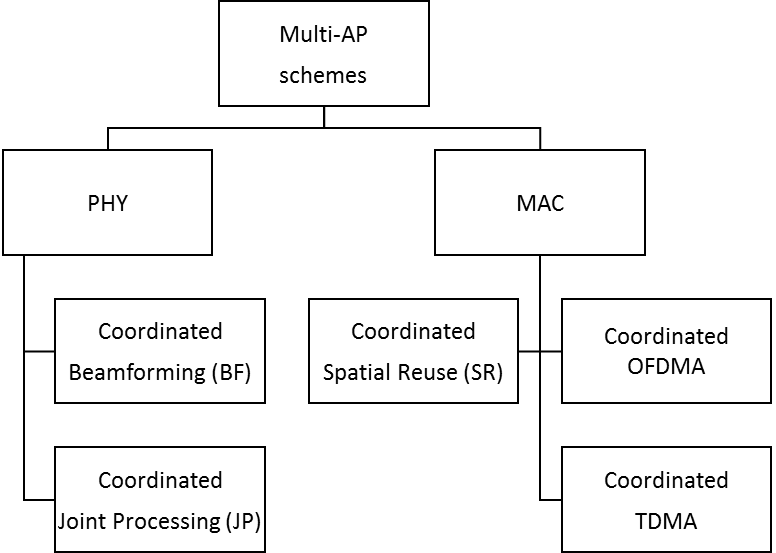How is WiFi 7 different from WiFi 6?
Changes in tech are speeding up. It hasn't been that long since WiFi 6/6E was officially released. However, WiFi 7 is popping up. Is WiFi 7 too early? Is WiFi 7 even necessary? And what can it do? Here, you can learn about the differences between WiFi 7 and WiFi 6.
What is WiFi 7?
WiFi 7 is the next generation WiFi standard, also known as 802.11be with the main goal of “Extremely High Throughput” (EHT).
WiFi 7 is an ambitious project, focusing its innovations on the foundational PHY and MAC layers. For PHY (the physical layer), WiFi 7 introduces 320 MHz bandwidth, 4K-QAM, Multi-RU, and enhanced MU-MIMO. For better network performance, WiFi 7 uses Multi-Link Operation (MLO) to enable link aggregation at the MAC layer. Thanks to these innovative technologies, WiFi 7 further improves network throughput and reduces network latency over WiFi 6.
How has WiFi developed over time?
The first version of the 802.11 protocol was released in 1997 and provided up to 2 Mbps of speed. This was updated with 802.11ax to permit up to 9.6 Gbps, which has proven to be popular.
|
Protocol |
WiFi |
Time |
Speed |
|
802.11 |
/ |
1997 |
Up to 2 Mbps |
|
802.11a/b/g |
WiFi |
1999-2003 |
Up to 54 Mbps |
|
802.11n |
WiFi 4 |
2009 |
Up to 600 Mbps |
|
802.11ac |
WiFi 5 |
2013 |
Up to 6.9 Gbps |
|
802.11ax |
WiFi 6/6E |
2019-2021 |
Up to 9.6 Gbps |
|
802.11be |
WiFi 7 |
2024 |
Up to 46 Gbps |
WiFi 7 vs WiFi 6: What’s the difference?
|
Technology |
WiFi 6 |
WiFi 7 |
|
Standard |
IEEE 802.11ax |
IEEE 802.11be |
|
Max theoretical data rate |
~9.6Gbps |
~46.1Gbps |
|
Frequency band |
2.4 GHz, 5 GHz, 6 GHz (WiFi 6E) |
2.4 GHz, 5 GHz, 6 GHz |
|
Channel bandwidth |
20 MHz, 40 MHz, 80 MHz 80+80 MHz, 160 MHz |
Up to 320 MHz |
|
Highest modulation order |
OFDMA |
OFDMA |
|
Max number of spatial streams |
8×8 UL/DL MU-MIMO |
16×16 UL/DL MU-MIMO |
|
Security |
WPA3 |
WPA3 |
What’s new with WiFi 7?
WiFi 7 has been upgraded in almost every aspect, making the WLAN throughput almost 5× faster than WiFi 6. To create a more connected world, the protocol defines modifications to both the physical layer (PHY) and MAC layer.
- More Bandwidth up to 320 MHz
The opening up of the 6 GHz band has led to a cleaner and wider spectrum for WiFi. WiFi 7 innovatively put forward the 320 Mhz bandwidth mode in the 6 GHz band. It has double the throughput compared with the 160 MHz of WiFi 6. It also supports non-contiguous bandwidth, such as 160+80 MHz and 160+160 MHz.

- Higher-Order 4K-QAM
WiFi 7 further enhances the modulation order from 1024-QAM to 4096-QAM. This means each modulation symbol can carry 12 bits of data. With the same coding, 4096-QAM can achieve a 20% rate increase compared with 1024-QAM in WiFi 6.
- More Streams and Enhanced MU-MIMO
WiFi 7 upgrades the number of spatial streams from 8 to 16. This leads to doubling the theoretical physical transmission rate.
- Multi-RU and Preamble Puncturing
WiFi 7 introduces a more flexible resource unit (RU) allocation method. With WiFi 6, one user can only be assigned one RU, and cannot be assigned a different RU. WiFi 7 allows nodes to be assigned multiple RUs to improve resource utilization.
Multi-RU is created by puncturing the operating channel. The puncturing technology can mask the channel that is occupied and use other available channels to improve channel utilization. This avoids transmitting on frequencies that are unauthorized by local regulations.
- Multi-Link Operation (MLO)
MLO enables link aggregation at the MAC layer, making a link mapped to a channel and band. It can provide higher throughput, lower latency, and higher reliability, which are useful to a number of applications from VR/AR to industrial IoT.

- Multi-AP Features
Multi-AP refers to a collection of features that rely on direct AP coordination to
achieve desired network performance goals. Different flavors of multi-AP solutions are being considered. There are several types of technology such as coordinated OFDMA (C-OFDMA), coordinated spatial reuse (CSR), coordinated beamforming (CBF), and joint transmission (JXT) will be applied to the MAC or PHY layer.

Learn More about WiFi 7
What is Wi-Fi 7? An in-depth overview of the future Wi-Fi
Wi-Fi 7 Fundamentals: What is 4K-QAM?









